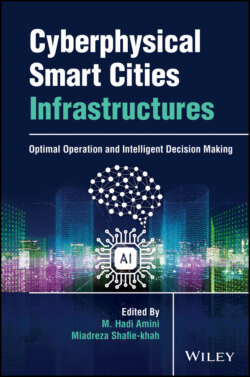Читать книгу Cyberphysical Smart Cities Infrastructures - Группа авторов - Страница 25
2.3.2.1 Big Data Algorithms and Challenges
ОглавлениеDue to the big data revolution, the enormous volume of high‐performance computations are unavoidable in such smart cities. Thus, big data algorithms are getting one of the important functioning pieces of smart cities.
Transportation System: Transportation systems are generated using advanced technologies where applications of big data vary and are important [36]. Scenarios are established in the research studies to offer the following options to smart people: suggesting the best travel time for any given trip, providing real‐time traffic information, predicting movement patterns according to personality (daily routing path) or spatiotemporal routines, enhancing crash analysis, planning bus routes, improving taxi dispatch, and optimizing traffic time during big occasions [36]. For example, Zhu et al. [37] developed an approach to use two algorithms: Bayesian inference and Random forest to execute in real time to predict the probability of crash occurrence to decrease crash risks in smart cities. Moreover, researchers [38] have established a combination of supervised and regression algorithms, such as multivariate adaptive regression splines, regression trees, and logistic regression, to study motor vehicle accident injury behavior.
Urban Governance: Learning from human mobility patterns discloses the movement and trend of a large population, the most popular applications of which are in domains like crime prediction [36], disaster evacuation, big events management, and safety estimation. To that end, knowledge about big events derived from bus trajectories, including event start time and end time, can be beneficial for the event planning and management department [39].
